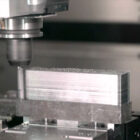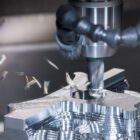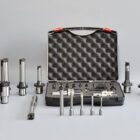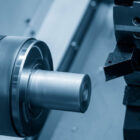Boring tools, essential in many different sectors, must be handled carefully to ensure user safety and optimize efficiency. These powerful tools are essential in manufacturing, construction, and many other industries. To avoid mishaps, limit injuries, and guarantee the effective functioning of these tools, close attention to safety protocols is important. This dedication to ethical usage entails learning the specifics of each tool, carrying out routine extremapps, and abiding by operating safety regulations. With this, a safe work environment can be created that promotes productivity and prevents accidents by placing a high priority on safety standards. This is the reason why it is advised to purchase these essential tools from reliable and genuine boring tools suppliers in Bangalore, one like FineTech Toolings, an ISO 9001:2015 certified company, where precision is a culture and continuous innovation a belief. Yet, it is important to always follow some essential tips and precautions for using boring tools responsibly, some of which are mentioned in the blog below.
Personal Protective Equipment
When using boring tools, the first and most important line of defence against possible risks is to wear the appropriate Personal Protective Equipment. The necessity of donning a full suite of personal protective equipment, including gloves, safety glasses, hearing protection, and proper clothing, is emphasized. Safety glasses serve as eye protection, guarding against possible collisions, flying debris, and dust. Earmuffs or earplugs, which provide protection against the damaging effects of extended exposure to loud noises produced by the tools, are examples of hearing protection. Gloves function as a barrier to protect the hands, lowering the possibility of cuts, abrasions, or contact with potentially dangerous substances. Finally, wearing the right clothes guarantees covering, thus reducing skin exposure. When used in tandem, personal protection equipment forms a strong barrier that isolates the user from any potential dangers related to using boring tools. People may improve their personal safety, reduce the risk of injury, and make the workplace a safer place to work by making the use of appropriate safety gear a priority.
Tool inspection and maintenance
The cornerstone of safe tool usage is routine inspection and maintenance, which guarantees peak performance and reduces possible dangers. The need for pre-operation inspections as a basic procedure is emphasized. People should carefully examine blades, bits, and power sources before using them to look for any indications of wear, damage, or malfunction. While power supplies should be checked for loose connections, frayed cables, or other obvious problems, blades and bits should be sharp and free of cracks or abnormalities. Stressing the value of these inspections is essential to averting faults and unforeseen events when the machine is in operation. Regular upkeep, such as cleaning, lubrication, and calibrating, extends the life and effectiveness of boring tools. Updating worn-out parts, making sure the alignment is correct, and routinely inspecting and tightening bolts are all essential to keeping the equipment reliable. Following a planned maintenance schedule helps users extend the life of the tool and lowers the risk of malfunctions, accidents, and interruptions while it’s in use, which fosters a safer and more efficient workplace.
Operational safety tips
Operational safety is essential when using boring tools to guarantee a safe working environment. In order to avoid unanticipated movements during operation, users must give effective workpiece security top priority. To improve control and lower risks, keeping the posture steady, distributing the body weight evenly, and firmly holding the tool are all important aspects. Furthermore, emphasizing how important it is to plan the tool path guarantees a methodical approach and reduces the possibility of unanticipated contacts with barriers or abnormalities in the material. Maintaining a tidy workstation is essential to avoid tripping risks and enable unhindered tool movement. Users should also modify the depth and speed of their tools based on the material they are working with. Comprehending the characteristics of the material helps to avoid overheating, minimizes tool wear, and improves overall performance. By encouraging a proactive and cautious attitude, these operational safety measures greatly lower the chance of mishaps and injuries when using boring tools.
Electrical and power tool safety
Electrical safety should always come first while using electric-powered boring equipment. It’s important to utilize extension cables properly. In order to prevent overloading circuits, users should use cables that have a sufficient power rating for the device in question. To avoid electrical risks, make sure cords are free from damage like cuts or frays. It is necessary to ground electric-powered tools in order to securely divert possible electrical currents. Three-pronged plugs and grounded outlets must always be used. One non-negotiable part of electrical safety is avoiding damp situations. Because there is a significant risk of electric shock while working with water and electricity, it is essential to keep equipment, wires, and outlets dry. By stressing these electrical safety precautions, it guarantees that users are aware of how to avoid electrical risks, and promotes a safe working environment when using electric-powered boring tools.
Dust and debris management
Controlling the dust and debris that boring tools generate is essential to preventing respiratory risks. The need of taking proactive steps to reduce exposure and guarantee a secure workplace is emphasized. One of the main tactics for managing airborne particles is the use of dust collection devices. By capturing and containing dust at its source, these devices stop it from circulating into the atmosphere. By putting such devices in place, the danger of respiratory problems brought on by breathing in small particles is significantly reduced. Wearing respiratory protection becomes necessary when dust collection equipment alone may not be sufficient. An extra line of protection is provided by respirators, such as masks or respirator cartridges, especially while handling dust-producing products or in poorly ventilated spaces. Finally, maintaining a workstation with adequate ventilation is essential to reducing the amount of airborne particles present. A steady flow of fresh air is ensured by adequate ventilation, which lowers the chance of respiratory exposure to dangerous dust. Using these tactics, any health hazards and potential respiratory diseases brought on by extended exposure to airborne particles can be avoided, in addition to fostering a better work atmosphere.
Emergency procedures
When using boring tools, it’s important to be prepared for emergencies. It is imperative that users acquaint themselves with fundamental first aid protocols, encompassing measures for managing wounds, burns, and other injuries that could arise when operating a tool. It is critical to have an easily accessible first aid kit at the workspace. Supplies like bandages, antiseptic wipes, and any other things required should be included in the box. The speed at which first aid supplies may be obtained can have a big impact on how an injury turns out. Also, instant reporting of any incidents or tool malfunctions must be carried out so as to guarantee a prompt reaction, and help to maintain continuous safety improvements. The integration of emergency procedures into safety protocols enables prompt addressing of unanticipated circumstances, and promotes a safer working environment while using power tools. Keeping a safe and effective workspace requires being ready for anything and acting quickly when it does.
This safety guide, which promotes safe and responsible activities, is a priceless tool for anybody using boring tools. By implementing suggestions, safety measures, and insights into their everyday activities, the accuracy and productivity of boring tools can be enhanced, while also guaranteeing the safety of workers. Putting safety first should not simply be a habit; it should be a dedication to establishing an environment in the workplace where people may use boring tools with assurance, knowing that their health and safety come first.






